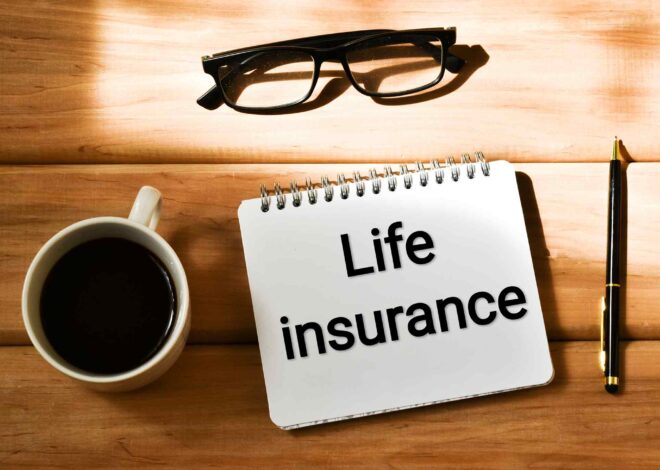
Common Myths About Insurance Debunked
Insurance is a vital tool that provides financial security in times of crisis, whether it’s for health, life, home, or auto. However, many people are reluctant to purchase insurance or misunderstand its importance due to widespread myths. Misconceptions about insurance can prevent individuals from getting the coverage they need or from making informed decisions when selecting an insurance plan.
In this article, we will debunk common myths about insurance to provide clarity and help you make well-informed choices regarding your coverage.
Myth 1: I’m Young and Healthy, So I Don’t Need Insurance
Reality:
One of the most dangerous misconceptions is that young and healthy individuals do not need insurance. While it’s true that younger people may be at lower risk for serious health conditions, life is unpredictable. Accidents or sudden illnesses can happen to anyone, regardless of age. Health insurance can cover unexpected medical expenses, while life insurance can provide for your family in the event of an untimely death.
Additionally, many insurance policies, especially health and life insurance, are cheaper when you’re younger and healthier. Waiting until later in life, when health problems may arise, can lead to higher premiums or even difficulty getting coverage.
Myth 2: Life Insurance Is Only for the Elderly or Those with Families
Reality:
Many people believe life insurance is only necessary if you are older or have a family that depends on you. However, life insurance is not just about providing for dependents. It can also help cover personal debts, such as student loans, mortgages, or other financial obligations that might fall on loved ones after your death.
Additionally, purchasing life insurance while you’re young can lock in lower rates for a longer period. The younger and healthier you are, the more affordable life insurance tends to be. Life insurance can also be a strategic financial tool, offering savings or investment components in certain types of policies, such as whole life or universal life insurance.
Myth 3: All Insurance Policies Are the Same

Reality:
This is a dangerous myth that could lead to underinsured individuals or gaps in coverage. Insurance policies can vary widely, even within the same type of insurance. For example, not all auto insurance policies offer the same coverage. Some may only cover liability, while others provide comprehensive and collision coverage.
Similarly, health insurance plans vary in terms of what medical services are covered, deductibles, and premiums. When selecting insurance, it’s essential to compare policies and understand what each plan offers to ensure it fits your needs.
Take the time to read and understand the terms of the policy, and don’t hesitate to ask your insurance provider for clarification on coverage limits, exclusions, and the benefits provided by each policy.
Myth 4: Homeowners Insurance Covers Everything
Reality:
While homeowners insurance is essential for protecting your home, it does not cover every type of damage or event. Many people assume that their policy will cover anything that goes wrong, but this is not always the case. For example, standard homeowners insurance typically does not cover damage from floods, earthquakes, or routine wear and tear.
If you live in an area prone to natural disasters such as floods or earthquakes, you may need to purchase additional coverage or a separate policy. Furthermore, some high-value items like jewelry, fine art, or collectibles may require additional coverage beyond what is offered in a standard policy.
To avoid surprises, review your homeowners insurance policy carefully and consider any additional coverage you may need based on your location and the specific risks to your property.
Myth 5: Red Cars Cost More to Insure
Reality:
This is a persistent myth that has no basis in fact. The color of your car does not affect your auto insurance premiums. Insurance companies base their rates on factors such as the make, model, age of the vehicle, its safety features, and how likely it is to be stolen.
Your driving record, the amount of coverage you choose, and where you live also play a significant role in determining your premium. While many believe that a red car implies speed and risk, insurers do not factor color into their calculations. So, if you’re thinking of getting a red car, don’t worry about it costing more to insure.
Myth 6: Renters Don’t Need Insurance
Reality:
Many renters mistakenly believe that their landlord’s insurance will cover their personal belongings in the event of theft, fire, or other damage. In reality, a landlord’s insurance typically only covers the building itself, not the personal possessions of tenants. Renters insurance is designed to protect your belongings and provide liability coverage if someone is injured in your rental unit.
Renters insurance is usually affordable and can save you thousands of dollars in the event of a disaster or theft. It also often provides coverage for additional living expenses if your rental becomes uninhabitable due to a covered event, such as a fire.
Myth 7: The Cheapest Policy Is Always the Best Option

Reality:
While it’s tempting to choose the least expensive insurance policy, the cheapest option is not always the best. Insurance is about risk management, and a bare-bones policy may leave you with insufficient coverage when you need it most. For instance, an inexpensive health insurance plan may have high deductibles and limited benefits, leading to significant out-of-pocket costs in the event of a major illness or injury.
Similarly, a low-cost auto insurance policy may only provide minimal liability coverage, leaving you responsible for expenses if you’re at fault in an accident. Instead of focusing solely on price, evaluate the coverage, exclusions, and limits of a policy to ensure it adequately meets your needs.
Myth 8: Insurance Companies Always Try to Avoid Paying Claims
Reality:
While some people believe that insurance companies will do everything they can to avoid paying claims, this is not the norm. Insurance companies are in the business of providing coverage and processing claims according to the terms of the policy. Denying valid claims can lead to bad publicity and legal challenges, which companies try to avoid.
However, it is crucial to read and understand your policy to ensure you meet the conditions for a claim. For example, auto insurance policies may not cover accidents that occur when driving under the influence, and homeowners insurance may exclude certain types of damage. Ensuring that you comply with the terms of the policy will increase the likelihood of a successful claim.
If you feel that a claim has been unfairly denied, you can appeal the decision or seek advice from a legal or insurance expert.
Myth 9: Health Insurance Isn’t Worth It Because I Rarely Get Sick
Reality:
Health insurance is not just about routine doctor visits or covering expenses when you get sick. It’s also about protecting yourself from the high cost of unexpected medical emergencies, such as accidents, surgeries, or chronic illnesses that can arise without warning.
A single hospital stay or medical procedure can lead to overwhelming bills, which health insurance helps cover. Even if you’re healthy now, having health insurance ensures you’re prepared for unexpected medical expenses that could otherwise lead to financial ruin.
In addition, many health insurance plans offer preventative services, such as vaccines, screenings, and wellness checkups, which can help you stay healthy and avoid more significant medical issues later on.
Myth 10: I Don’t Need Insurance Because I Have Savings

Reality:
While having savings is an important financial safety net, relying on savings alone to cover unexpected events can be risky. Medical bills, car accidents, home damage, or lawsuits can quickly drain savings. For example, a major medical emergency could cost hundreds of thousands of dollars, far exceeding what many people have saved.
Insurance provides a buffer that helps protect your savings from being wiped out by unforeseen events. In most cases, insurance premiums are far more affordable than the out-of-pocket costs you could incur in a disaster. Insurance helps preserve your savings for future needs, such as retirement or education, rather than spending it all on a single unexpected event.
Conclusion
Myths about insurance can prevent people from making informed decisions and getting the protection they need. By debunking these common misconceptions, it becomes clear that insurance is an essential part of financial planning, offering protection and peace of mind. Whether it’s life, health, auto, or home insurance, understanding the facts can help you make smarter choices and ensure that you and your loved ones are adequately covered.


